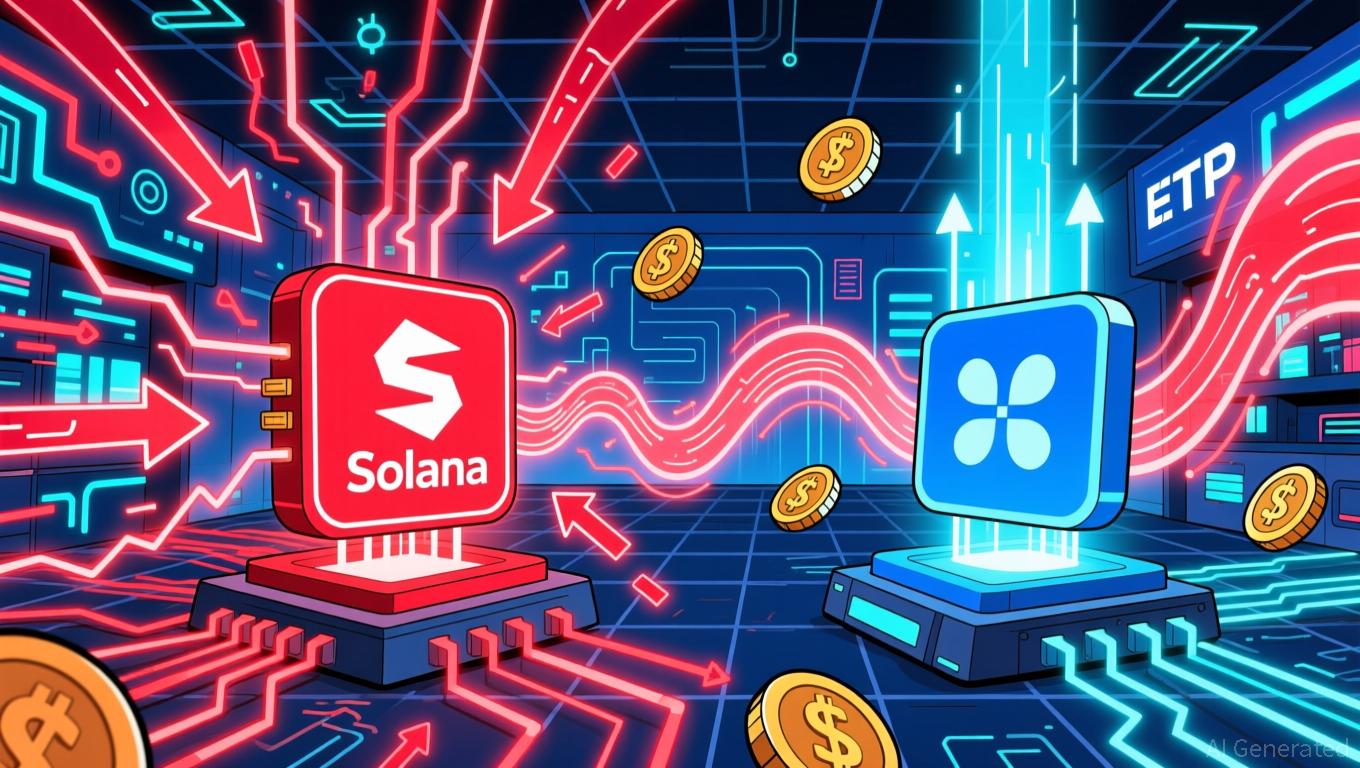Tether’s $15 Billion Earnings Depend on Managing Expansion and Maintaining Stability
- Tether projects $15B 2025 profits driven by $186B USDT issuance and institutional investment growth. - Global stablecoin volumes hit $4T in 2025, with South Asia and U.S. leading adoption surges. - Seeking $20B at $500B valuation, Tether aims to expand markets while maintaining dollar peg stability. - Stablecoins now process $46T annually, surpassing PayPal/Visa, as tokenized fiat gains traction. - Regulatory clarity and competition from USDC highlight Tether's balancing act between growth and stability.
Tether Holdings Ltd., the company behind the world’s most prominent stablecoin
The rising popularity of Tether’s USDt token reflects a wider global movement. According to TRM Labs’ 2025 Crypto Adoption and Stablecoin Usage Report, stablecoin transaction volumes soared to $4 trillion by August, marking an 83% increase from the previous year, as detailed in

Tether’s financial growth has captured the attention of major investors. Reports indicate the company is seeking $20 billion in new funding at a valuation of $500 billion, which would rank it among the world’s most valuable private enterprises, according to Bloomberg. While Ardoino did not disclose specific details, he mentioned that “a huge number of companies” have shown interest in investing, with possible involvement from SoftBank Group Corp. and Ark Investment Management LLC. The additional capital is intended to speed up Tether’s entry into new markets and technological advancements, with Ardoino insisting the valuation should be “very low” compared to its profit potential.
The expansion of the stablecoin sector is transforming conventional financial systems.
As Tether faces regulatory challenges and rivalry from competitors like Circle’s
Disclaimer: The content of this article solely reflects the author's opinion and does not represent the platform in any capacity. This article is not intended to serve as a reference for making investment decisions.
You may also like
Ethereum News Update: Amundi’s Integrated Approach Connects Blockchain with Conventional Financial Regulations
- Amundi, Europe's largest asset manager, launched its first Ethereum-based tokenized money-market fund, enabling 24/7 settlements and transparent record-keeping via blockchain. - The hybrid model, developed with CACEIS, combines traditional fund operations with blockchain-based ownership, preserving regulatory compliance while expanding investor access. - Ethereum's dominance in stablecoin and RWA transfers ($105.94B in 30 days) underscores its role in accelerating tokenization, with Amundi positioning it

XRP News Today: XRP ETFs Drive Price Increases, While Solana ETFs Ease Selling Pressure
- XRP ETFs raised $587M in inflows since late November, outpacing Solana's $568M as investors favor altcoins with regulatory clarity and utility. - Bitwise XRP ETF's $107M debut and zero-fee strategy drove momentum, while Solana ETFs faced $156M weekly outflows due to network reliability concerns. - XRP's inflows acted as a "battering ram" pushing prices above $2.27, contrasting Solana's ETFs which merely dampened sell pressure without reversing its decline. - Analysts predict XRP could reach $3 by Decembe

The Federal Reserve's Change in Policy and Its Impact on Alternative Cryptocurrencies Such as Solana
- Fed's 2025 policy shifts, including rate cuts and stablecoin regulations, are reshaping altcoin markets by altering liquidity and risk appetite. - Solana's Alpenglow upgrade (150ms finality, 1M TPS) addresses scalability issues, aligning with Fed's AI-driven infrastructure focus despite network reliability concerns. - Institutional inflows into Solana ETFs ($100M AUM) contrast with retail caution (78% HODLers in red), highlighting divergent risk perceptions amid 30% price corrections. - Divergent ETF flo

Avail's Intent-Driven Nexus Addresses the Issue of Fragmented Liquidity Across Chains
- Avail launches Nexus Mainnet, a cross-chain solution unifying liquidity across Ethereum , Solana , and EVM networks. - The intent-solver model enables seamless asset transfers without technical complexities, streamlining user experiences. - Developers gain modular tools for multichain integration, reducing costs as cross-chain liquidity demand grows. - Nexus abstracts execution layers, offering unified balances and execution while addressing fragmentation challenges. - With $50B+ in cross-chain activity
